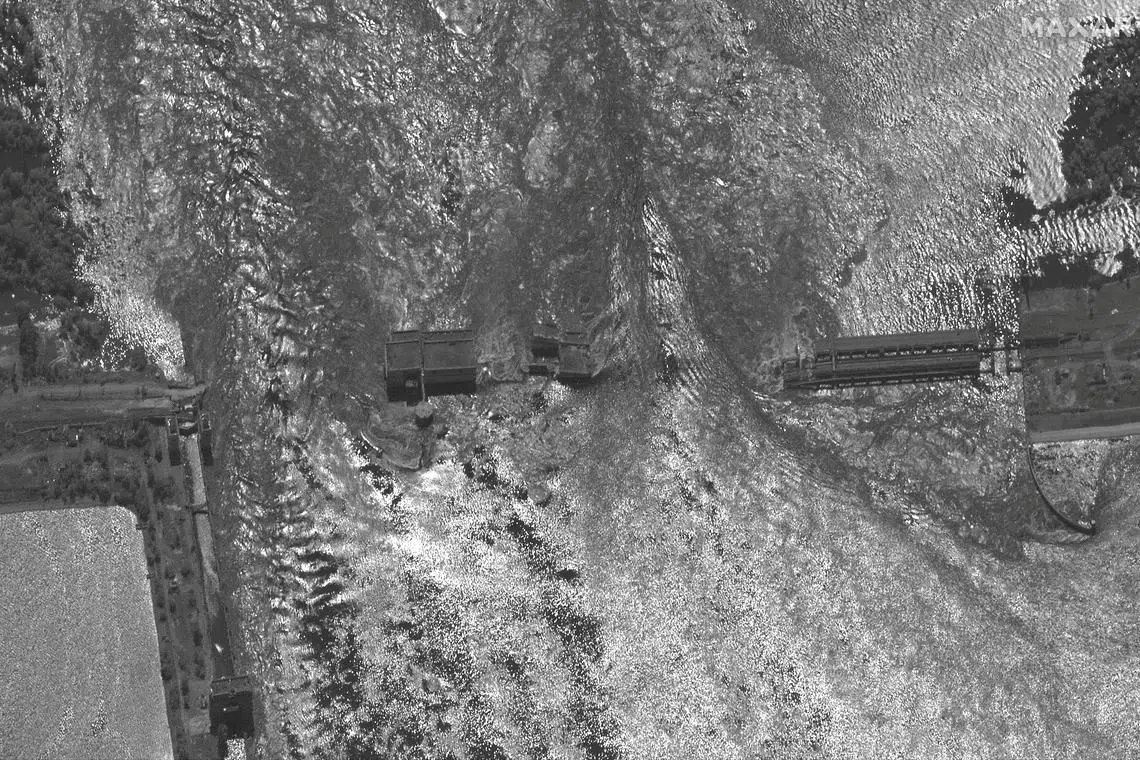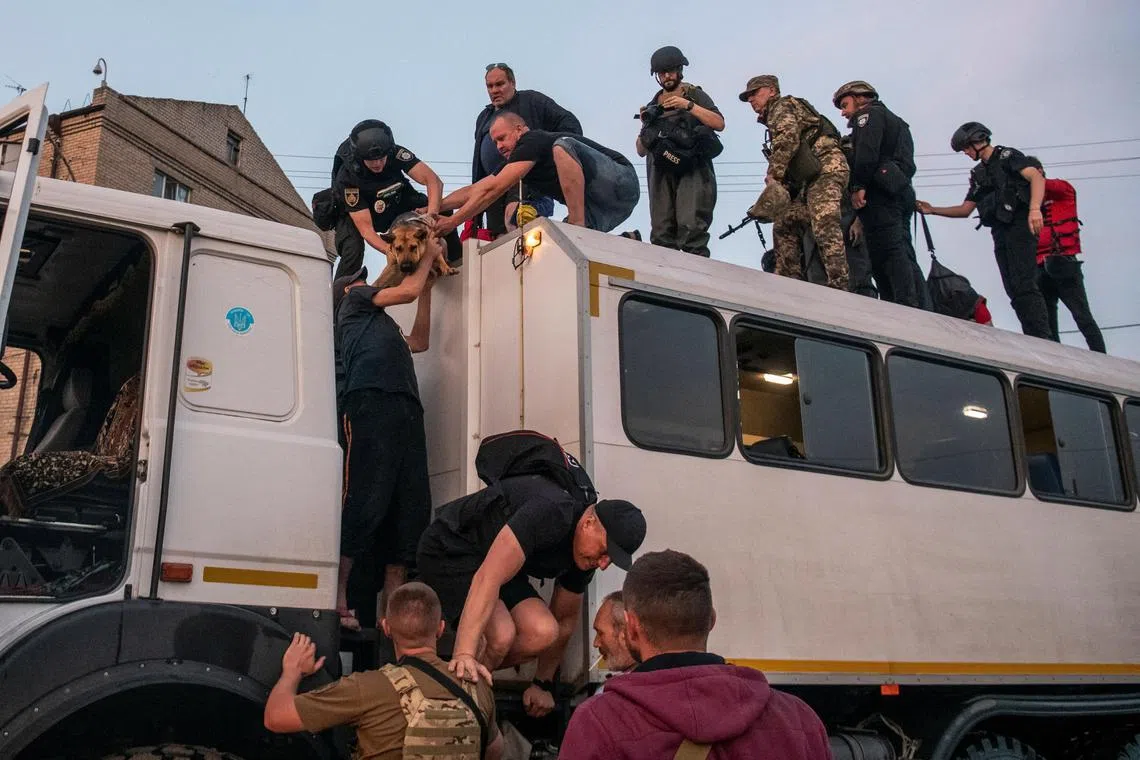What is the Kakhovka dam in Ukraine, and what happened?
Sign up now: Get ST's newsletters delivered to your inbox
Follow topic:
KYIV - A huge Soviet-era dam on the Dnipro River that separates Russian and Ukrainian forces in southern Ukraine was breached on Tuesday, unleashing floodwaters across the war zone.
Ukraine said Russia destroyed it, while Moscow said Kyiv sabotaged it to cut off water supplies to Crimea and distract attention from a “faltering” counteroffensive.
What is the dam, what happened – and what is not known?
The Kakhovka Dam
The dam, part of the Kakhovka hydroelectric power plant, is 30m tall and 3.2km long. Construction was started under Soviet leader Josef Stalin and finished under strongman Nikita Khrushchev.
The dam bridged the Dnipro River, which forms the front line between Russian and Ukrainian forces in the south of Ukraine.
Creation of the 2,155 sq km Kakhovka reservoir in Soviet times forced around 37,000 people to be moved from their homes.
The reservoir holds 18 cu km of water – a volume roughly equal to the Great Salt Lake in the US state of Utah.
The reservoir also supplies water to the Crimean peninsula, which Russia annexed in 2014, and to the Zaporizhzhia nuclear plant, which is also under Russian control.
What happened?
Ukraine, which commented first, said Russia was responsible.
President Volodymyr Zelensky accused Russian forces of blowing up the Kakhovka Hydroelectric Power Station from inside the facility, and said Moscow must be held to account for a “terrorist attack”.
“At 2.50am, Russian terrorists carried out an internal detonation of the structures of the Kakhovskaya HPP. About 80 settlements are in the zone of flooding,” Mr Zelensky said after an emergency meeting of senior officials.

A satellite image shows flooding at the Nova Kakhovka dam and hydroelectric power facility on Tuesday.
PHOTO: REUTERS
A Ukrainian military spokesman said Russia’s aim is to prevent Ukrainian troops from crossing the Dnipro River to attack Russian occupying forces.
Russia said Ukraine sabotaged the dam to cut off water supplies to Crimea and distract attention from its faltering counteroffensive.
“We can state unequivocally that we are talking about deliberate sabotage by the Ukrainian side,” Kremlin spokesman Dmitry Peskov told reporters.
Earlier some Russian-installed officials said no attack had taken place, with one in Zaporizhzhia noting that the dam collapsed due to earlier damage and the pressure of the water.
Russia’s state news agency Tass carried a report to the same effect.
What is the human impact?

Rescuers evacuate residents from a flooded area after the Nova Kakhovka dam was breached, in Kherson on Tuesday.
PHOTO: REUTERS
With water levels surging higher, many thousands of people are likely to be affected. Evacuations of civilians
Maxar Technologies said satellite images of more than 2,500 sq km, between Nova Kakhovka and the Dniprovska Gulf south-west of Kherson city on the Black Sea, showed numerous towns and villages flooded.
Ukrainian officials estimated about 42,000 people were at risk from the flooding, which is expected to peak on Wednesday, including some 25,000 in Russia-held parts. About 80 communities are threatened by flooding.
Crimea
The destruction of the dam risks lowering the water level of the Soviet-era North Crimean Canal, which has traditionally supplied Crimea with 85 per cent of its water needs.
Most of that water is used for agriculture, some for the Black Sea peninsula’s industries, and around one fifth for drinking water and other public needs.
Nuclear plant
The Zaporizhzhia nuclear power plant, Europe’s largest, gets its cooling water from the reservoir. It is located on the southern side, now under Russian control.
“Our current assessment is that there is no immediate risk to the safety of the plant,” International Atomic Energy Agency chief Rafael Grossi said.
He added that it is essential that a cooling pond be left intact as it supplies enough water for the cooling of the shut-down reactors.
“Nothing must be done to potentially undermine its integrity,” Mr Grossi said. REUTERS


